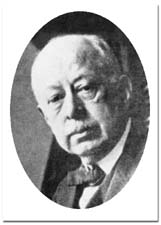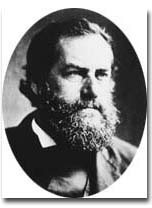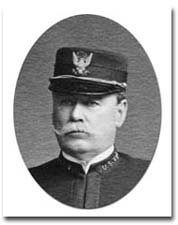![]()

Joseph Leidy, MD (M 1844), renowned naturalist and the nation's first parasitologist. Leidy spent his entire career at his alma mater, authoring about 1,200 articles and describing more than 100 new species of intestinal parasites. Leidy's 1846 observation of trichina cysts in the muscles of pigs led to an understanding of trichinosis and the importance of cooking pork thoroughly. In 1871 he explained the role of houseflies in transmitting disease. His later work demonstrated that hookworm parasites in cats might cause chronic anemia in humans. (American Society for Microbiology Archives)
Edward Orem Shakespeare, MD (M 1869), nationally distinguished pioneer in bacteriology and public health, pictured here as a US Army medical officer, 1899. Early in his career Shakespeare pursued ophthalmology at Philadelphia General Hospital (also known as Blockley). His interests extended to pathology and bacteriology. Blockley appointed Shakespeare as its first "Bacteriologist," while Penn gave him a faculty position in pathology. Shakespeare made his mark studying late-19th-century epidemics in the US and abroad. He explained the 1885 outbreak of typhoid fever in Plymouth, PA, the result of water supply contamination. That same year President Grover Cleveland appointed him to investigate cholera in Europe and India. During the Spanish-American War, Shakespeare worked as a medical officer alongside Drs. Walter Reed and Victor Vaughan in solving the problem of typhoid fever epidemics in US Army camps. (Edward O. Shakespeare)

Allen John Smith, MD (M 1886). Smith, who headed Penn's pathology department from 1903 to 1926, greatly improved laboratory instruction at Penn, particularly in the area of staining tubercle bacillus. One of his most important contributions was in parasitology: Smith distinguished the American hook-worm from the Ancylostoma of the old world. (American Society for Microbiology Archives)

